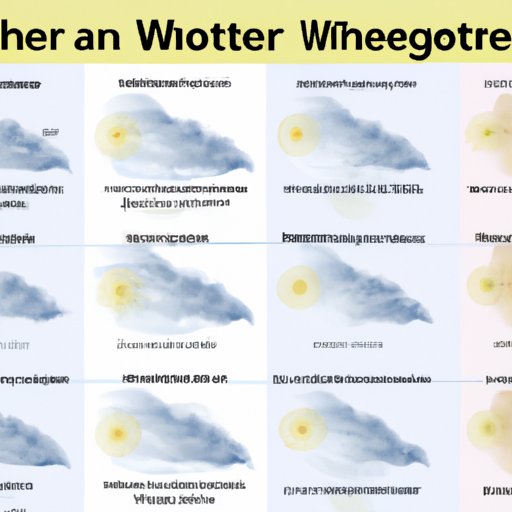Introduction
Fronts are a crucial part of meteorology and weather patterns, but they can be confusing and difficult to understand. This article aims to provide a comprehensive guide for beginners on what fronts are, how they form, and their impact on weather. We will cover the different types of fronts, the science behind frontal boundaries, and examples of how frontal systems affect our daily lives.
Understanding the Front: A Beginner’s Guide
A front is a boundary between two air masses with different properties, such as temperature, moisture, and density. When these air masses meet, they do not mix, and a front is created. Fronts can form anywhere, at any time of the year, and impact weather patterns in various ways. Understanding these boundaries is a crucial part of meteorology and predicting weather events.
Fronts in Meteorology: How They Form and Their Impact on Weather
The formation of fronts is a complex process influenced by many factors, such as air temperature, pressure, humidity, and circulation. Different types of weather patterns are associated with different types of fronts, such as thunderstorms, hurricanes, and blizzards. The impact of fronts on weather can be felt in various ways, including changes in temperature, precipitation, and wind patterns.

The Different Types of Fronts Explained
There are several types of fronts, including cold fronts, warm fronts, stationary fronts, occluded fronts, dry lines, and polar fronts. Each type has unique characteristics and impacts on weather features. Cold fronts are boundaries where cold, dense air mass advances and replaces warm air. Warm fronts are the opposite, where warm air replaces cold air, creating widespread precipitation. Stationary fronts occur when two air masses meet and neither advances, often resulting in prolonged rainfall. Occluded fronts happen when a cold front overtakes a warm front, creating complex weather patterns. Dry lines occur where dry air mass meets moist air mass, leading to thunderstorms. Polar fronts mark the boundary between polar and tropical air masses and impact global weather patterns.
Why Fronts Matter: The Science Behind Frontal Boundaries
Fronts matter because they mark the boundaries between air masses with different properties. Air masses with different properties cannot mix, and the boundary between them can trigger weather events. Air masses differ in terms of temperature, moisture, and density, and this affects how they behave when they come into contact. Understanding these differences can help predict weather patterns and prepare for weather events.
From Warm to Cold: Following the Movement of a Front
Fronts move and change over time, often resulting in changes in weather patterns. Tools used to track fronts include satellite imagery, Doppler radar, weather balloons, and surface observations. Frontal movement can impact temperature, precipitation, and wind patterns by altering the location of the boundary between air masses.
How Fronts Affect Our Daily Lives: Examples of Frontal Systems
Frontal systems can have a significant impact on our daily lives. Weather patterns associated with different types of fronts can affect transportation, agriculture, and other industries. Examples of how frontal systems can disrupt or improve our lives include delayed flights due to winter storms caused by cold fronts, reduced crop yields due to droughts associated with dry lines, and pleasant weather during periods of stable stationary fronts.
Frontal Wars: How Competing Air Masses Battle for Dominance
When two air masses with different properties meet, they don’t give up easily, and they compete for dominance. These competitions can lead to severe weather patterns, such as tornadoes, hurricanes, and thunderstorms. The boundary between air masses provides the ideal location for these battles, making fronts major players in the formation of severe weather patterns.
Conclusion
To summarize, fronts are crucial boundaries between air masses with different properties, and understanding them is critical in predicting and preparing for weather events. They impact weather patterns in various ways, from temperature changes to thunderstorms and hurricanes. By knowing how fronts form, move, and interact with each other, we can predict weather patterns more accurately and prepare accordingly.
